|

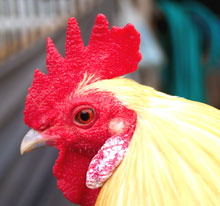 Feathers, Comb, and Wattle: In some breeds, such as the Seabright, the cock only has slightly pointed neck feathers, and the identification must be made by looking at the comb. Feathers, Comb, and Wattle: In some breeds, such as the Seabright, the cock only has slightly pointed neck feathers, and the identification must be made by looking at the comb.
Chickens have a fleshy crest on their heads called a comb, and a fleshy piece of hanging skin under their beak called a wattle. These organs help to cool the bird by redirecting blood flow to the skin. Both the male and female have distinctive wattles and combs. In males, the combs are often more prominent, though this is not the case in all varieties.

Feeding Habits: Chickens are omnivores and will feed on small seeds, herbs and leaves, grubs, insects and even small mammals if they can get them. Domestic chickens are typically fed commercially prepared feed that includes a protein source as well as grains. Chickens often scratch at the soil to get at adult insects and larvae
or seed.
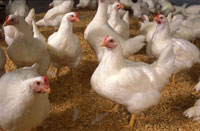 Incidents of cannibalism can occur when a curious bird pecks at a pre-existing wound or during fighting (even among female birds). This is exacerbated in close quarters. In commercial egg production this is controlled by trimming the beak (removal of 2/3 of the top half and occasionally 1/3 of the lower half of the beak). Incidents of cannibalism can occur when a curious bird pecks at a pre-existing wound or during fighting (even among female birds). This is exacerbated in close quarters. In commercial egg production this is controlled by trimming the beak (removal of 2/3 of the top half and occasionally 1/3 of the lower half of the beak).
Can Chickens Fly? Domestic chickens are not capable of flying for long distances, although they are generally capable of flying for short distances such as over fences. Chickens will sometimes fly simply in order to explore their surroundings, but will especially fly in an attempt to flee when they perceive danger. Because of the risk of flight, chickens raised in the open air generally have one of their wings clipped by the breeder — the tips of the longest feathers on one of the wings are cut, resulting in unbalanced flight which the bird cannot sustain for more than a few meters (more on wing clipping).
Pecking Order: Chickens are gregarious birds and live together as a flock. They have a communal approach to the incubation of eggs and raising of young. Individual chickens in a flock will dominate others, establishing a "pecking order", with dominant individuals having priority for access to food and nesting locations. Removing hens or roosters from a flock causes a temporary disruption to this social order until a new pecking order is established.
Crowing: Contrary to popular belief, roosters may crow at any time of the day or night. Their crowing - a loud and sometimes shrill call - is a territorial signal to other roosters. However, crowing may also result from sudden disturbances within their surroundings.
Chickens as pets: Chickens can make loving and gentle companion animals. In Asia, chickens with striking plumage have long been kept for ornamental purposes, including feather-footed varieties such as the Cochin and Silkie from China and the extremely long-tailed Phoenix from Japan. Asian ornamental varieties were imported into the United States and Great Britain in the late 1800s. Poultry fanciers then began keeping these ornamental birds for exhibition, a practice that continues today. From these Asian breeds, distinctive American varieties of chickens have been developed.
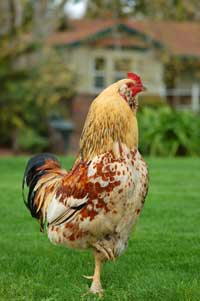 Today, some cities in the United States still allow residents to keep live chickens as pets, although the practice is quickly disappearing. Individuals in rural communities commonly keep chickens for both ornamental and practical value. Some communities ban only roosters, allowing the quieter hens. Many zoos use chickens instead of insecticides to control insect populations. Today, some cities in the United States still allow residents to keep live chickens as pets, although the practice is quickly disappearing. Individuals in rural communities commonly keep chickens for both ornamental and practical value. Some communities ban only roosters, allowing the quieter hens. Many zoos use chickens instead of insecticides to control insect populations.
Raising Your Chicken: Growing chickens can easily be tamed by feeding them a special treat such as meal worms in the palm of one's hand, and by being with them for at least ten minutes daily when they are young. Chickens are also fond of the taste of beer.
A former recurring skit on the weekly comedy show Saturday Night Live featured a chicken pet store with the Chinese owner (as played
by Dana Carvey) not wishing to sell to
customers on the basis that "Chickens make
lousy house pets."

Courting: When a rooster finds food he may call the other chickens to eat it first. He does this by clucking in a high pitch as well as picking up and dropping the food. In some cases the rooster will drag the wing opposite the hen on the ground, while circling her. This is part of chicken courting ritual. When a hen is used to coming to his "call" the rooster may mount the hen and proceed with the fertilization.
Nests and Eggs: Chickens will try to lay in nests that already contain eggs, and have been known to move eggs from neighboring nests into their own. Some farmers use fake eggs made from plastic or stone to encourage hens to lay in a particular location. The result of this behaviour is that a flock will use only a few preferred locations, rather than having a different nest for every bird.
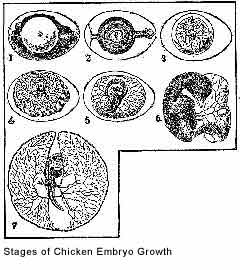 Hens can also be extremely stubborn about always laying in the same location. It is not unknown for two (or more) hens to try to share the same nest at the same time. If the nest is small, or one of the hens is particularly determined, this may result in chickens trying to lay on top of each other. Hens can also be extremely stubborn about always laying in the same location. It is not unknown for two (or more) hens to try to share the same nest at the same time. If the nest is small, or one of the hens is particularly determined, this may result in chickens trying to lay on top of each other.
Going Broody: Sometimes a hen will stop laying and instead will focus on the incubation of eggs, a state that is commonly known as going broody. A broody chicken will sit fast on the nest, and protest or peck in defense if disturbed or removed, and will rarely leave the nest to eat, drink, or dust bathe. While broody, the hen keeps the eggs at a constant temperature
and humidity, as well as turning the eggs regularly.
When Eggs Hatch: At the end of the incubation period, which is an average of 21 days, the eggs (if fertilized) will hatch, and the broody hen will take care of her young.
Since individual eggs do not all hatch at exactly the same time (the chicken can only lay one egg approximately every 25 hours), the hen will usually stay on the nest for about two days after the first egg hatches. During this time, the newly-hatched chicks live off the egg yolk they absorb just before hatching.
The hen can hear the chicks peeping inside the eggs, and will gently cluck to encourage them to break out of their shells. If the eggs are not fertilized and do not hatch, the hen will eventually grow tired of being broody and leave the nest.
Modern egg-laying breeds rarely go broody, and those that do often stop part-way through the incubation cycle. Some breeds, such as the Cochin, Cornish and Silkie, regularly go broody and make excellent mothers.
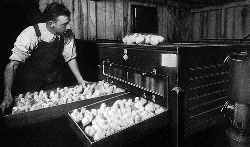 Artificial incubation: Chicken egg incubation can successfully occur artificially as well. Nearly all chicken eggs will hatch after 21 days of good conditions - 99.5° fahrenheit (37.5°C) and around 55% relative humidity (increase to 70% in the last Artificial incubation: Chicken egg incubation can successfully occur artificially as well. Nearly all chicken eggs will hatch after 21 days of good conditions - 99.5° fahrenheit (37.5°C) and around 55% relative humidity (increase to 70% in the last
three days of incubation to help soften egg shell).
Many commercial incubators are industrial-sized with shelves holding tens of thousands of eggs at a time, with rotation of the eggs a fully automated process.
Home incubators are usually small boxes (styrofoam incubators are popular) and hold a few to 50 eggs. Eggs must be turned three to five times each day, rotating at least 90 degrees. If eggs aren't turned, the embryo inside will stick to the shell and likely will be hatched with physical defects. This process is natural; hens will stand up three to five times a day and shift the eggs around with their beak.
 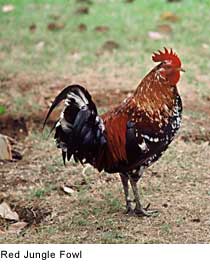
History of the Chicken: Chickens are domesticated descendants of the red junglefowl, which is biologically classified as the same species.
Its In the Genes: Recent studies have shown that chickens (and possibly other bird species) still retain the genetic blueprints to produce teeth in the jaws, although these are dormant in living animals. These are a holdover from primitive birds such as Archaeopteryx, which were descended from theropod dinosaurs.
History of Chicken Sales: In the United States, chickens were once raised
primarily on family farms. Prior to about 1930, chicken was served primarily on special occasions or on Sunday, as the birds were typically more valued for their eggs than meat. Excess roosters or non-productive hens would be culled from the flock first for butchering. As cities developed and markets sprung up across the nation, live chickens from local farms could often be seen for sale in crates outside the market to be butchered and cleaned on site by
the butcher.
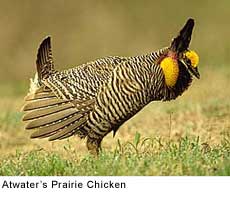 Changes in Chicken Industry: Changes in Chicken Industry:
With the advent of vertical integration and selective breeding of efficient meat-type birds, poultry production changed dramatically. Large farms and packing plants emerged that could grow birds by the thousands.
Chickens could be sent to slaughterhouses for butchering and processing into pre-packaged
commercial products to be frozen or shipped fresh to markets or wholesalers.
Meat-type chickens currently grow to market weight in 6-7 weeks whereas only fifty years ago it took three times as long. This is due exclusively to genetic selection and nutritional advances (and not to use of growth hormones, which are illegal for use in poultry in the US). Once a meat consumed only occasionally, the common availability has made chicken a common and significant meat product within developed nations. Growing concerns over the cholesterol content of red meat in the 1980s and 1990s further resulted in increased consumption of chicken.
Efficient Egg Layers: Another breed of chicken, the Leghorn, was further developed to be efficient layers of eggs. Egg production and consumption changed with the development of automation and refrigeration. Large farms were devoted solely to egg production and packaging. Today, eggs are produced on large egg ranches on which environmental parameters are well controlled. Chickens are exposed to artificial light cycles to stimulate egg production year-round. In addition, it is a common practice to induce molt through careful manipulation of light and the amount of food they receive in order to further increase egg size and production.
Issues with mass production: Many animal rights advocates object to killing chickens for food or to the "factory farm conditions" under which they are raised. They contend that commercial chicken production often involves raising the birds in large, crowded rearing sheds that prevent the chickens from engaging in many of their natural behaviors. Contrary to popular belief, however, meat-type chickens are not raised in cages and are instead raised on the floor on litter such as rice hulls. They are slaughtered prior to sexual maturity, and thus many of the aggressive behaviors seen in adult chickens (fighting, cannibalism) are seldom seen in meat-type chickens. In 2004, 8.9 billion chickens were slaughtered in the United States.
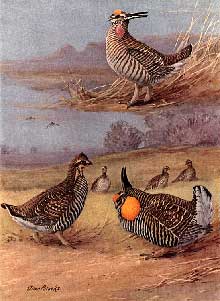 Bird Brains? Although many would argue that the birds are not intelligent and thus not a high priority for humane treatment on farms, a woman once brought a chicken on The Tonight Show with Jay Leno where it played "Mary Had A Little Lamb" on a toy piano and bowled 3 strikes. Animal rights groups such as PETA see this and other "amazing" trained chickens as evidence that they are intelligent and sentient and should not be killed or eaten. Bird Brains? Although many would argue that the birds are not intelligent and thus not a high priority for humane treatment on farms, a woman once brought a chicken on The Tonight Show with Jay Leno where it played "Mary Had A Little Lamb" on a toy piano and bowled 3 strikes. Animal rights groups such as PETA see this and other "amazing" trained chickens as evidence that they are intelligent and sentient and should not be killed or eaten.
Selective Breeding: Another animal welfare issue is the use of selective breeding to create heavy, large-breasted birds, which can lead to crippling leg disorders and heart failure for some of the birds.
In addition, many scientists have raised concerns that companies growing one variety of bird for eggs or meat are causing them to become much more susceptible to disease. For this reason, many scientists are promoting the conservation of heritage breeds to retain genetic diversity in the species.
Chicken Diseases: Chickens are susceptible to a wide variety of lethal diseases. Chickens are also susceptible to parasites, including lice, mites, ticks, fleas, and intestinal Worms.
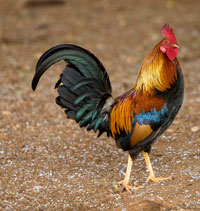 Culture and Mythology: In Indonesia the chicken has great significance during Culture and Mythology: In Indonesia the chicken has great significance during
the Hindu cremation ceremony. A chicken
is a channel for evil spirits which may be present during the ceremony. A chicken is tethered by the leg and kept present at
the ceremony for the duration to ensure that any evil spirits present during the ceremony
go into the chicken and not the family members present. The chicken is then taken home and returns to its normal life. It is not treated in any special way or slaughtered after the ceremony.
In ancient Greece, the chicken was not normally used for sacrifices, perhaps because it was still considered an exotic animal. Because of its valour, cocks are found as attributes of Ares, Heracles and Athena. The Greeks believed that even lions were afraid of cocks. Several of Aesop's Fables reference this belief.
In the cult of Mithras, the cock was a symbol of the divine light and a guardian against evil.
In the Bible, Jesus prophesied the betrayal by Peter: "And he said, I tell thee, Peter, the cock shall not crow this day, before that thou shalt thrice deny that thou knowest me." (Luke 22:43) Thus it happened (Luke 22:61), and Peter cried bitterly. This made the cock a symbol for both vigilance and betrayal. Earlier, Jesus compares himself to a mother hen, when talking about Jerusalem: "How often would I have gathered thy children together, even as a hen gathereth her chickens under her wings, and ye would not!" (Matthew 23:37; also Luke 13:34).
In many Central European folk tales, the devil is believed to flee at the first crowing of a cock.
In some sects of Orthodox Judaism a chicken is slaughtered on the afternoon before Yom Kippur (Day of Atonement) in a ceremony called kappores. Although not actually a sacrifice in the biblical sense, the death of the chicken reminds the penitent sinner that his or her life is in God's hands. A woman brings a hen to be slaughtered, a man brings a rooster. The meat is donated to the poor.
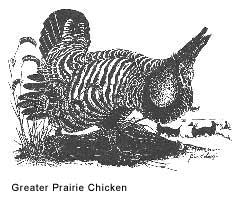 The Talmud speaks of learning "courtesy toward one's mate" from the rooster. This might refer to the fact that, when a rooster finds something good to eat, he calls his hens to eat first. The Talmud speaks of learning "courtesy toward one's mate" from the rooster. This might refer to the fact that, when a rooster finds something good to eat, he calls his hens to eat first.
The chicken is one of the Zodiac symbols of the Chinese calendar. Also in Chinese religion, a cooked chicken as a religious offering is usually limited to ancestor veneration and worship of village deities. Vegetarian deities such as Buddha are not one of the recipients of such offerings. Under some observations, an offering of chicken is present with "serious" prayer (while roasted pork is offered during a joyous celebration).
History:
The first pictures of chickens in Europe are found on Corinthian pottery of the 7th century BC. The poet Cratinus (mid-5th century BC, according to the later Greek author Athenaeus) calls the chicken "the Persian alarm". In Aristophanes's comedy The Birds (414 BC) a chicken is called "the Median bird", which points to an introduction from the East. Pictures of chickens are found on Greek red figure and black-figure pottery.
In ancient Greece, chickens were still rare and were a rather prestigious food for symposia. Delos seems to have been a centre of chicken breeding. An early domestication of chickens in Southeast Asia is probable, since the word for domestic chicken (*manuk) is part of the reconstructed Proto-Austronesian language. Chickens, together with dogs and pigs, were the domestic animals of the Lapita culture, the first Neolithic culture of Oceania.
Spread of the Chicken: Chickens were spread by Polynesian seafarers and reached Easter Island in the 12th century AD, where they were the only domestic animal, with the possible exception of the Polynesian Rat (Rattus exulans). They were housed in extremely solid chicken coops built from stone. Traveling as cargo on trading boats, they reached the Asian continent via the islands of Indonesia and from there spread west to Europe and western Asia.
Chickens in Ancient Rome: The Romans used chickens for oracles, both when flying and when feeding. The hen gave a favourable omen, when appearing from the left, like the crow and the owl. For the oracle, according to Cicero, any bird could be used, but normally only chickens were consulted. The chickens were cared for by the pullarius, who opened their cage and fed them pulses or a special kind of soft cake when an augury was needed. If the chickens stayed in their cage, made noises, beat their wings or flew away, the omen was bad; if they ate greedily, the omen was good.
Per Columella, the ideal flock consists of 200 birds, which can be supervised by one person if someone is watching for stray animals. White chickens should be avoided as they are not very fertile and are easily caught by eagles or goshawks. One cock should be kept for five hens. In the case of Rhodian and Median cocks that are very heavy and therefore not much inclined to sex, only three hens are kept per cock. The hens of heavy fowls are not much inclined to brood; therefore their eggs are best hatched by normal hens. A hen can hatch no more than 15-23 eggs, depending on the time of year, and supervise no more than 30 hatchelings. Eggs that are long and pointed give more male, rounded eggs mainly female hatchlings.
All text is available under the terms
of the GNU Free Documentation License
|